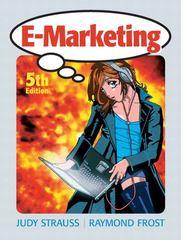
Q1 Q2 (b) (C) (d) Suppose that the inverse market demand for a commodity is given by 1 P =150_ 3Q Two rms could serve this market. The total cost curves of rm 1 and rm 2 are respectively 2 TC1(q1) = 30:11 and TCz(q2) = 5:13 Suppose that Firm 1 is a monopolist in the market. Determine the prot-maximizing output and market price for the rm. Calculate Firm 1's prot. Suppose that Firm 2 is a monopolist in the market. Determine the protmaximizing output and market price for the rm. CaICulate Firm 2's prot. Suppose the market is a duopoly where Firms 1 and 2 compete in quantities. Graph the Cournot best response functions. Determine the Nash equilibrium of the Cournot game. Determine the resulting price and the prots for the two rms. The weekly demand for hours of medical services in Smalltown, Alberta is given by QD (P) = 250 P Suppose Doctor Adams has a monopoly on the provision of medical services in Smalltown. The doctor's constant MC (and constant AC) is $4 per hour. Calculate the hourly price that will be charged, the weekly hours of medical services provided, and the doctor's weekly profit. Suppose that Doctor Brown, whose constant MC and AC is also $4 per hour, moves to town. The townspeople are indifferent between the services provided by the two doctors. Find the Nash equilibrium of the Cournot game. Determine the hourly price and each doctor's weekly profit. Determine whether the two doctors have any incentive to collude. (Hint: Assume they act like a monopolist and nd the total number of hours of service under a monopolist QM . Determine how many hours each doctor should provide of service, i.e., nd :11): and 1111;\" . Check that each doctor makes more profits when the use collusive behaviour that when they compete against each other in hours of service, i.e., engage in Cournot competition). Determine whether any one of the doctors has an incentive to defect on a collusive agreement. (Hint: Assume that one of the doctors, say j, abides by the collusive agreement (she produces qu\") while the other one, say i, examines whether it pays to cheat on the collusive agreement. Find q? the number of hours that doctor i provides when he defects (D) from the collusive agreement and








